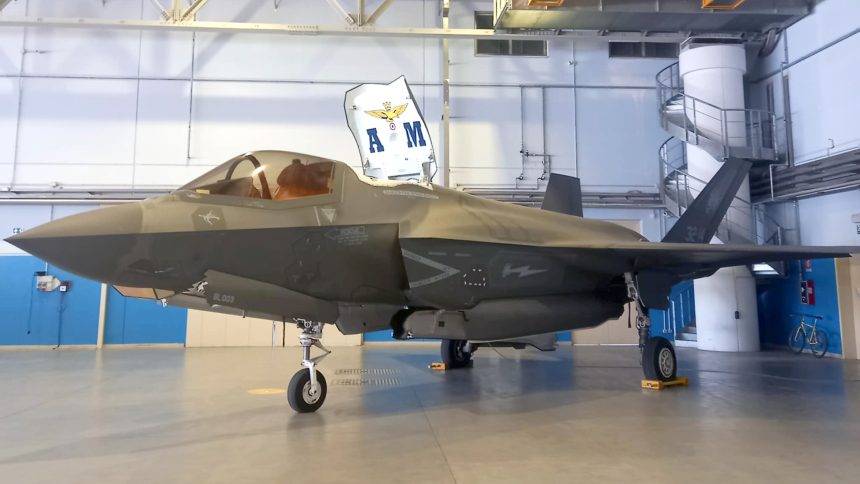The 101st Gruppo (Squadron), reactivated after a period in “quadro” (dormant) status, will operate the STOVL variant of the Lightning II aircraft from Amendola Air Base.
On Jul. 1, 2025, during a ceremony attended by several former members of the unit, the Aeronautica Militare (Italian Air Force) reactivated the 101° Gruppo to operate the service’s F-35B STOVL (Short Take-Off and Vertical Landing) aircraft. The 101st Squadron now joins the 13° Gruppo, the first Italian Air Force unit to operate the F-35, as part of the 32° Stormo (Wing).
F-35B BL-5/32-18 and BL-3/32-14 were on display at Amendola Air Base, both sporting the traditional insignia of the 101° Gruppo, a red lightning bolt piercing a snake, on the left intake, along with the unit’s WWII emblem painted on the left side of the nose section below the canopy. BL-3 was also given a large 101st Gruppo badge on the left tail, although it remains unclear whether this will become a permanent feature, as Italian F-35s usually display the wing insignia in that position.
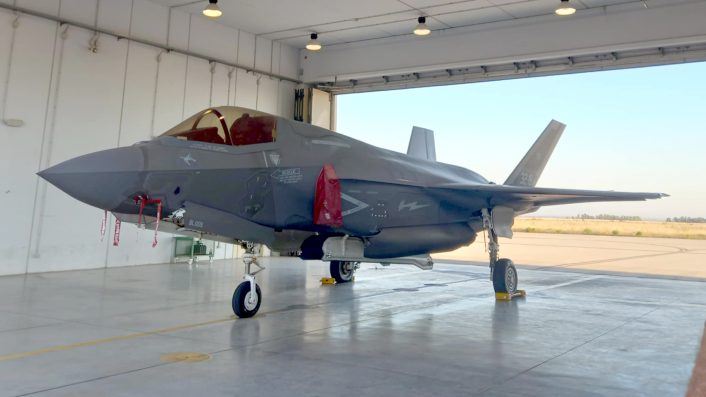
Former commander of the 101st Squadron, writer and friend Flavio Babini, was at Amendola for the event and took the photos of the unit’s F-35Bs featured in this article.
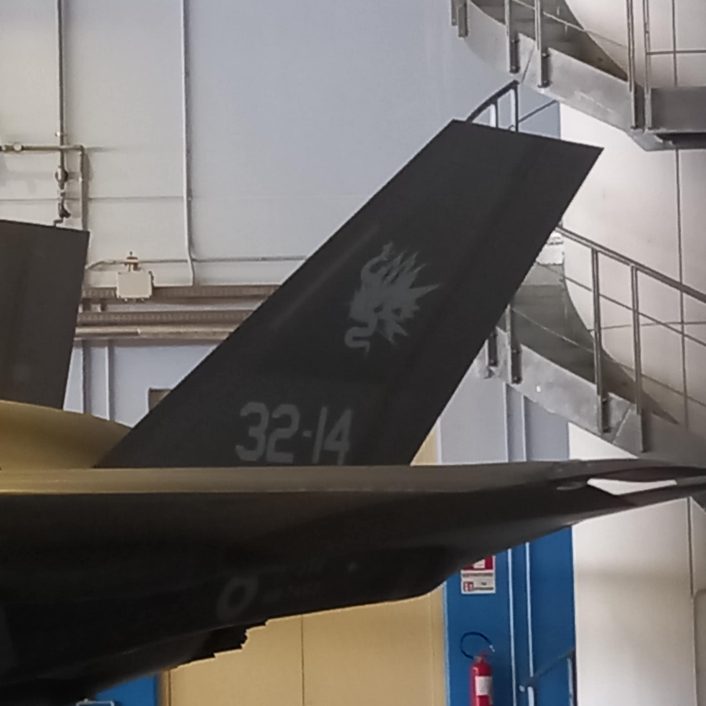
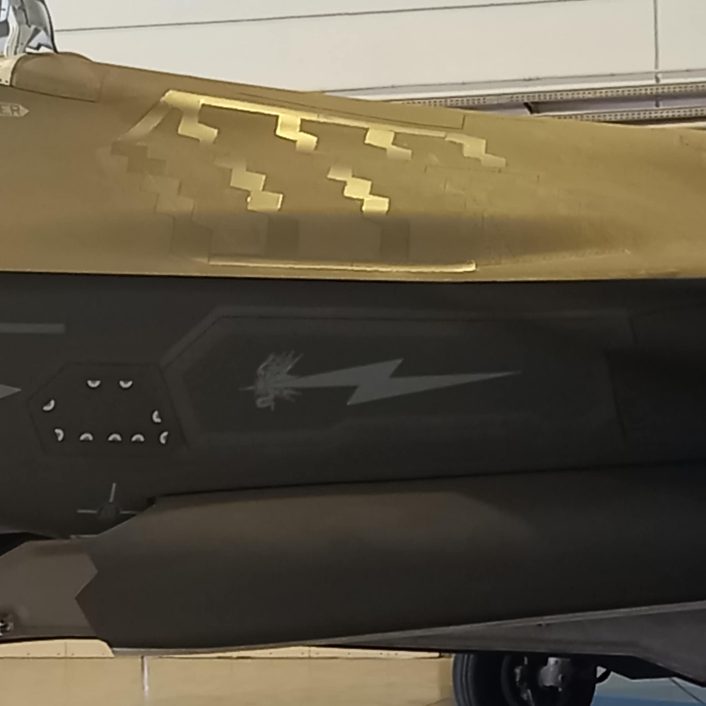
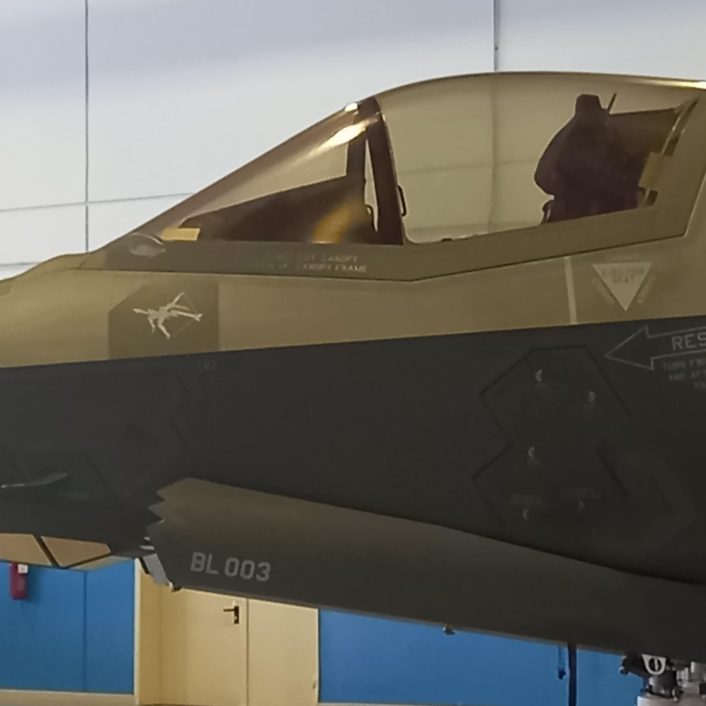
With the assignment of the F-35B to the 101st Gruppo, the Italian Air Force now operates four Lightning squadrons:
- 13° Gruppo at Amendola AB
- 102° Gruppo at Ghedi AB
- 156° Gruppo, the type’s OCU (Operational Conversion Unit) at Luke AFB, Arizona
- 101° Gruppo at Amendola
Beginning on Jul. 2, 2025, the squadron will be five, since the 154° Gruppo at Ghedi AB, will transfer its Tornado aircraft to the 155° Gruppo, to transition to the F-35. With the new set up, the 155th squadron will remain the only Italian Air Force unit to operate the residual Tornado IDS and ECR aircraft.
101st Gruppo
The 101° Gruppo has a distinguished lineage within the Italian Air Force, tracing its origins back to March 1941 when it was formed as the 101° Gruppo Autonomo Bombardamento a Tuffo, equipped with German-supplied Ju 87B “Stuka” dive bombers. Initially tasked with dive-bombing operations during World War II, the unit took part in several campaigns before being disbanded at the end of the war. It was reactivated in the post-war years as a jet unit flying F-84F Thunderstreaks, and later the G.91Y “Yankee”. During the 1950s, the 101st also contributed pilots and aircraft to the “Getti Tonanti,” the Aeronautica Militare’s official aerobatic team before the Frecce Tricolori.
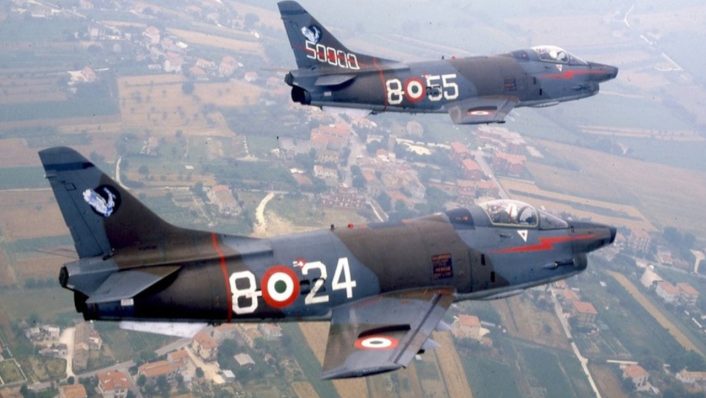
In the Cold War years, the unit transitioned into a ground attack role, and in 1994, it began operating the AMX “Ghibli,” a light-attack and reconnaissance aircraft developed jointly by Italy and Brazil. Disbanded temporarily in 1994 (when it was equipped with the G-91Y as part of the 8° Stormo), the 101st was reformed a year later at Amendola Air Base as a multi-role unit responsible both for operational missions and for the operational conversion of AMX pilots. Under the 32° Stormo, the squadron took part in NATO operations over the Balkans and contributed to tactical training for Ghibli crews. It remained a key component of the AMX fleet’s deployment capability throughout the 1990s and 2000s.
In 2014, as part of a broader reorganization of the Italian Air Force’s fixed-wing training pipeline, the 101° Gruppo was transferred back under the 51° Stormo at Istrana, focusing on advanced training and operational standardization for AMX pilots. The unit was eventually placed in cadre (dormant) status in November 2016, as the AMX fleet began to draw down in favor of more modern platforms, like the F-35.

